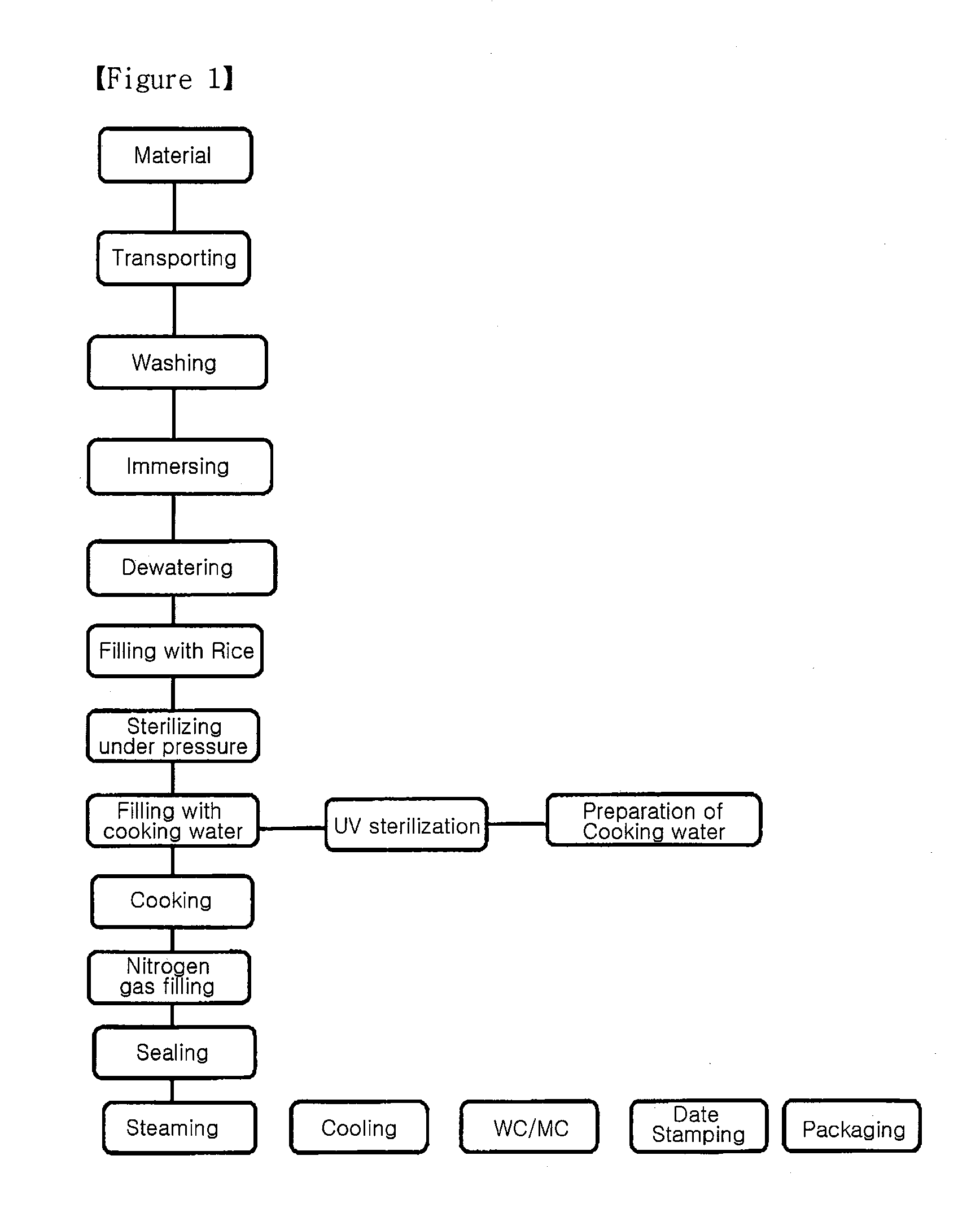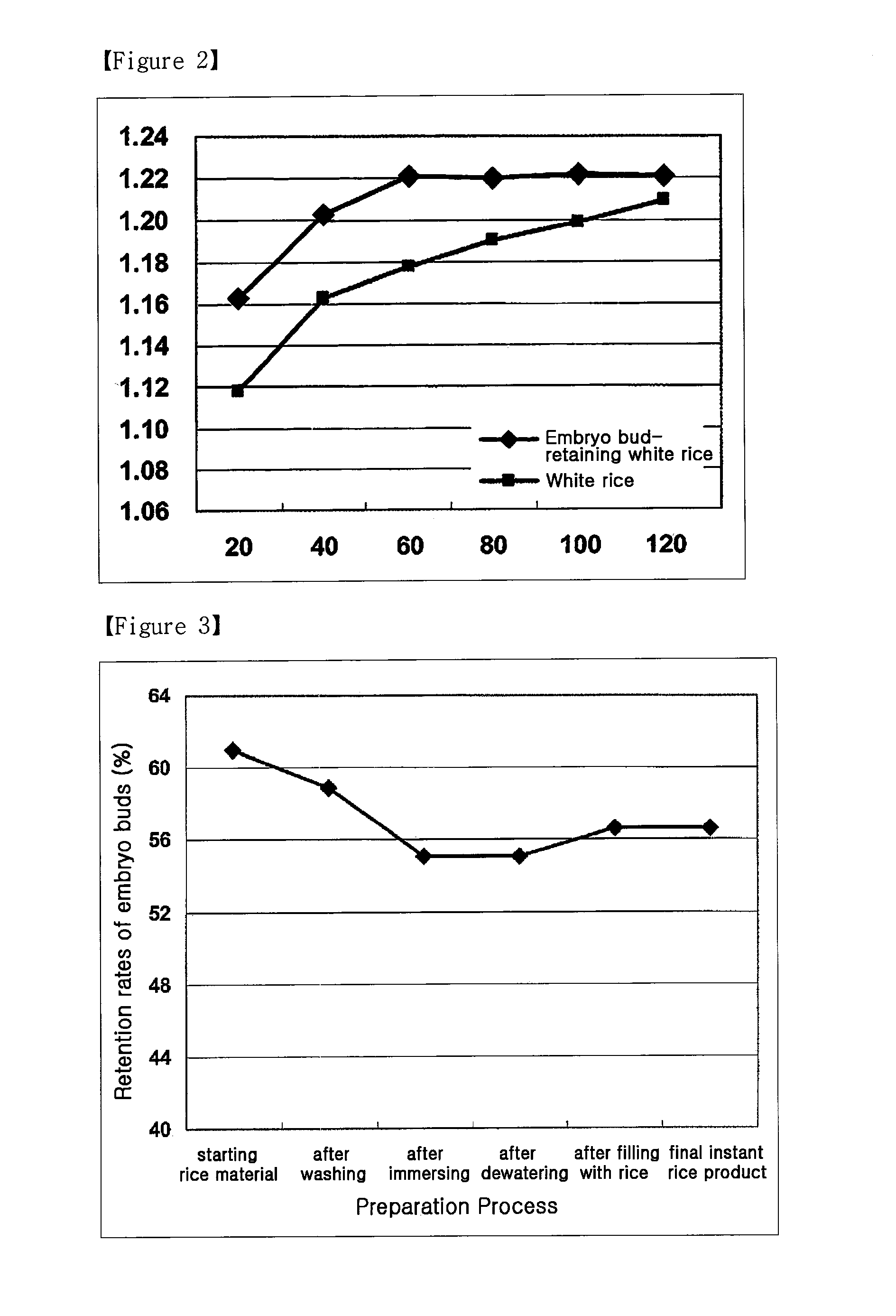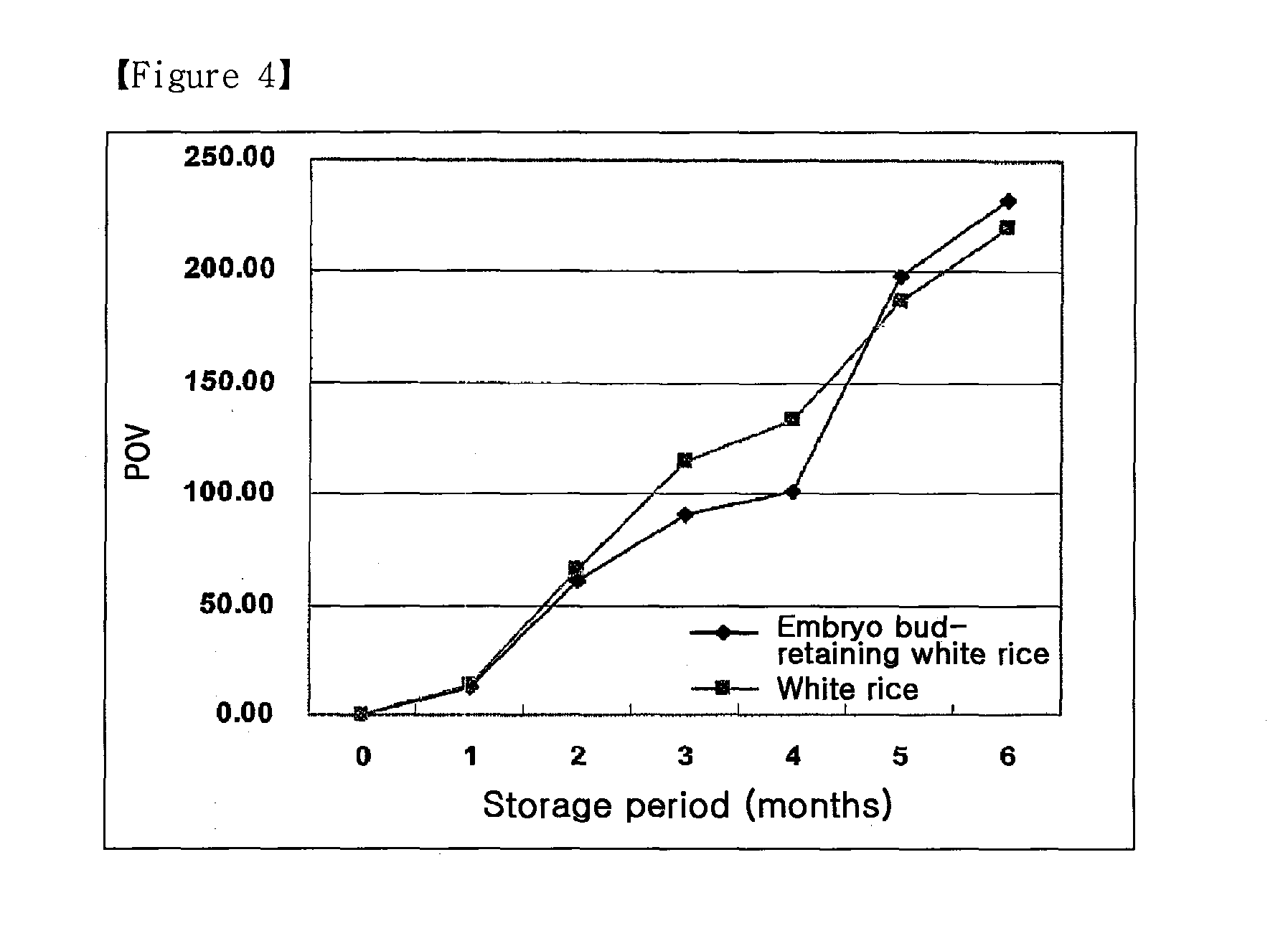Preparation Method of Cooked Rice in Aseptic Packing System Using Embryo Bud-Containing Rice
- Summary
- Abstract
- Description
- Claims
- Application Information
AI Technical Summary
Benefits of technology
Problems solved by technology
Method used
Image
Examples
example 1
Preparation of Instant Embryo Bud-Retaining White Rice
[0038]Embryo bud-retaining white rice was washed with pure water, immersed for 1.5 hrs in pure water, and dewatered. 110 Grams of the dewatered rice was placed in a heat-resistant vessel and sterilized at 140˜143° C. for 7 sec in an autoclayer (Shinwa). This autoclaving was repeated six more times. After the sterilization, the rice was cooked for 35 min with steam at 100° C. in a cooker with UV-sterilized water serving as cooking water. Thereafter, nitrogen gas was applied to the rice in a sterilized condition, sealed with a lead film, and allowed to stand for about 12 min to complete cooking, followed by cooling in water at 10° C. for 15 min to produce a packaged instant rice product.
[0039]The process flow of preparing the instant embryo bud-retaining white rice in accordance with the present invention is shown in FIG. 1.
experimental example 1
Determination of the Immersion Time Period of Embryo Bud-Retaining White Rice
[0041]After immersion in pure water, embryo bud-retaining white rice was measured for water absorption (weight after immersion / weight before immersion) as a function of immersion time (20, 40, 60, 80, 100 and 120 min) and compared to white rice in order to determine an optimal condition for immersion.
[0042]The results are given in Table 1 and FIG. 2.
TABLE 1Time (min)20406080100120Embryo Bud-retaining White1.161.201.221.221.221.22RiceWhite rice1.121.161.181.191.201.21
[0043]As seen in Table 1 and FIG. 2, the water absorption rate of embryo bud-retaining white rice increased with time to 60 min, after which no water absorption changes were detected. Embryo bud-retaining white rice still contains a sub-aleuron layer accounting for the sweet taste of rice. When immersed in water, the sub-aleuron layer holds water and this water is not removed even after the dewatering process of the rice, so that the embryo bud-...
experimental example 2
Determination of the Optimal Sterilization Time for Embryo Bud-Retaining White Rice
[0044]When embryo bud-retaining white rice was immersed in water, it generated sticky materials in contrast to white rice. The sticky materials were tested for the influence on sterilization of the rice. In order to determine an optimal sterilization time, embryo bud-retaining white rice was compared to white rice using a MCT (Microbiology Challenge Test). MCT is an assay method for determining the safety of a product during preparation and transportation by inoculating test product aliquots with a known number of viable cells of several test organisms and assaying for survivors at various time intervals. After being immersed for 1 hr in water, embryo bud-retaining white rice and white rice were placed in respective vessels and inoculated with Bacillus spores at a density of 107 CFU / g at the cold point and sterilized for 6.5˜7.0 sec, followed by observation of the cell numbers.
[0045]Embryo bud-retaini...
PUM
 Login to View More
Login to View More Abstract
Description
Claims
Application Information
 Login to View More
Login to View More - R&D
- Intellectual Property
- Life Sciences
- Materials
- Tech Scout
- Unparalleled Data Quality
- Higher Quality Content
- 60% Fewer Hallucinations
Browse by: Latest US Patents, China's latest patents, Technical Efficacy Thesaurus, Application Domain, Technology Topic, Popular Technical Reports.
© 2025 PatSnap. All rights reserved.Legal|Privacy policy|Modern Slavery Act Transparency Statement|Sitemap|About US| Contact US: help@patsnap.com



